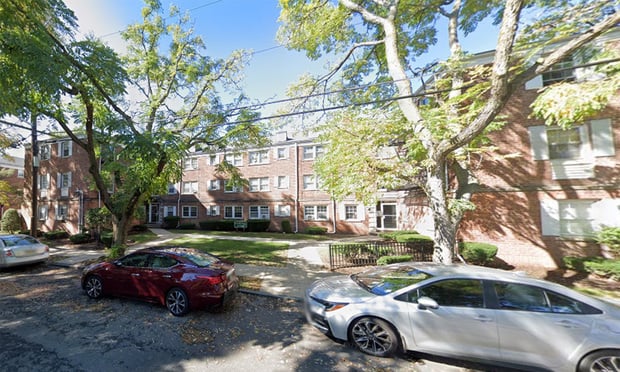 New York City Comptroller Scott M. Stringer
New York City Comptroller Scott M. Stringer
NEW YORK CITY—The New York City economy grew at a 3.9% clip in the fourth quarter of 2018, the highest rate posted for the entire year. Another positive indication for the market was that commercial leasing rose more than 45% in the last three months of last year.
According to a report released by New York City Comptroller Scott M. Stringer, employment in the city grew at its fastest quarterly rate in the last four years. However, the employment report was a mixed bag as the private sector added 34,000 jobs, but more than half of those new private-sector jobs were created in low-wage industries. This has been a prevailing trend recently.
For the full year, total private-sector jobs were up by 74,200 positions or 1.9% in 2018, marking the ninth consecutive year of positive job creation and the longest period of job gains on record.
“In this past year, New York City's economy has continued its solid performance, and New Yorkers have enjoyed a decade of solid economic growth,” says Comptroller Stringer. “But too few of our neighbors are sharing the fruits of this expansion. With looming risks to continued growth, insufficient gains in good-paying jobs, and a continued affordable housing crunch, we need to set the foundations for fair, equitable growth that lifts all New Yorkers up.”
The report notes that of the 34,000 private-sector jobs added in the fourth quarter, 21,100 were in low-wage industries; 10,100 were in medium-wage industries and 2,800 were in high-wage industries.
The greatest private-sector job gains were in health care and social assistance industries at 11,000 jobs added in the fourth quarter.
Education services added 6,500 jobs in the fourth quarter, the largest increase in this sector in 18 years. Most of the fourth quarter gain was in college and university employment, which added 4,300 jobs, also the highest increase in this workforce niche since the fourth quarter of 2000. Leisure and hospitality added 4,600 jobs, a two-year high, of which 2,900 were in bars and restaurants. Other services added 3,600 jobs, the largest gain in 19 years.
Professional and business services added 3,100 new jobs of which 2,800 were in professional, scientific, and technical services, according to the City Comptroller's report. The Construction sector enjoyed a turnaround, adding 2,300 jobs in the fourth quarter of 2018 after losing 1,000 jobs in the previous two quarters. Information recovered 1,100 jobs after three consecutive quarters of losses amounting to a loss of 2,600 positions. Retail trade added 300 positions after losing 200 jobs in the third quarter and manufacturing added 200 jobs in the last three months of last year.
Job losses in the fourth quarter took place in wholesale trade, which lost 1,100 jobs after losing 1,500 jobs the prior quarter. The financial activities sector lost 100 jobs after adding 800 jobs in the third quarter of last year.
Housing employment, which includes construction and workers in the real estate and property sector, added 3,300 jobs in the fourth quarter of 2018, the largest job gains since the creation of 6,500 jobs in the fourth quarter of 2017. The number of office workers increased by 4,100 in the fourth quarter of last year, the largest increase since 6,200 in the fourth quarter of 2017.
New commercial leasing activity in Manhattan increased 45.1% to more than 10.2 million square feet in the fourth quarter of 2018, the largest fourth quarter increase on record. Despite the sizable increase in new commercial leasing, Manhattan's overall commercial vacancy rate increased to 9.2%, the report states.
In terms of the city's housing market, the report notes that after five consecutive quarters of year-over-year decline, house prices in Manhattan rose 3.5% and 4.7%, respectively, on a year-over-year basis in the fourth quarter of 2018. However, the number of sales declined for the fifth consecutive quarter causing an increase in listing inventories. The decline in the number of sales could be due to the new federal tax law that limits the deductibility of the mortgage interest and property taxes, the rise in mortgage interest rates, and other economic and political uncertainties, the City Comptroller states in the report.
According to Douglas Elliman, on a year-over-year basis, the average sales price for a residential unit in Manhattan rose 3.5% to about $2.0 million in the fourth quarter.
All indicators point to the continuation of the city's decade-long economic expansion. The current business condition index provided by ISM-New York, Inc. (which measures the current state of the economy from the perspective of business procurement professionals) was 67.7% in the fourth quarter of 2018, which was lower than the record high of 74.7% in the previous quarter. However, an index reading greater than 50% indicates growth.
Want to continue reading?
Become a Free ALM Digital Reader.
Once you are an ALM Digital Member, you’ll receive:
- Breaking commercial real estate news and analysis, on-site and via our newsletters and custom alerts
- Educational webcasts, white papers, and ebooks from industry thought leaders
- Critical coverage of the property casualty insurance and financial advisory markets on our other ALM sites, PropertyCasualty360 and ThinkAdvisor
Already have an account? Sign In Now
*May exclude premium content© 2024 ALM Global, LLC, All Rights Reserved. Request academic re-use from www.copyright.com. All other uses, submit a request to [email protected]. For more information visit Asset & Logo Licensing.








